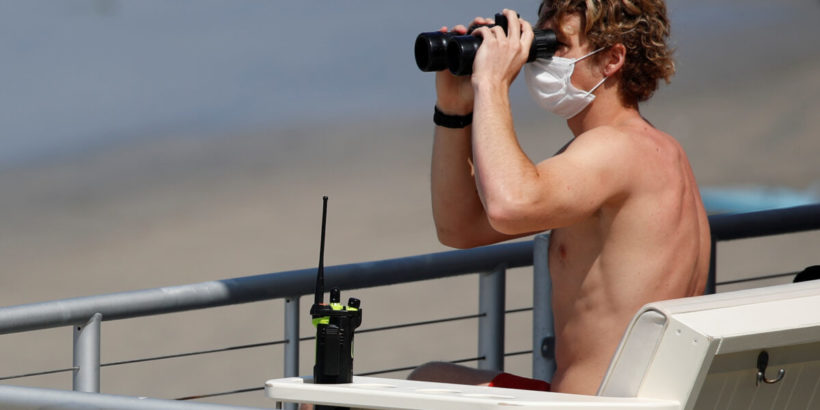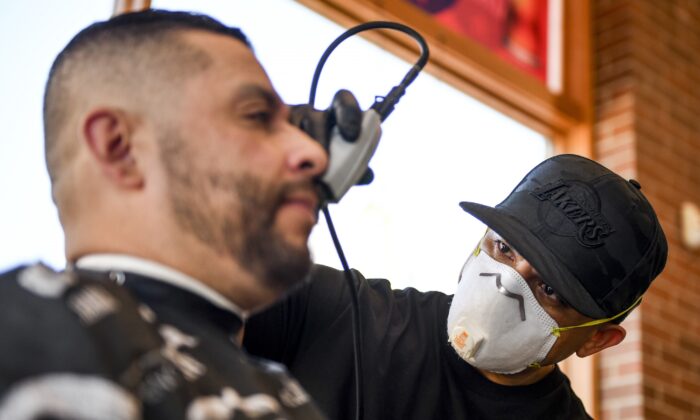April 29, 2020
Re-openings and Stay-at-Home Extensions: Here’s the Situation With All 50 States
April 29, 2020
BY
The CCP (Chinese Communist Party) virus, a novel coronavirus that emerged from mainland China last year, causes the potentially deadly disease COVID-19. The virus has been linked to over 50,000 deaths in the United States.
Here’s the situation with each state. This post will be updated. Last updated on April 29.
Gov. Kay Ivey, a Republican, is allowing her state to start reopening on April 30 after her stay-at-home order expires.
“As of this week, we no longer believe our hospitals will see an overwhelming amount of ICU patients who need ventilators, as we once believed, and that is sure good news,” Ivey said.
The new order, dubbed safer at home, will allow retailers to welcome customers inside. State beaches can reopen and elective procedures can resume.
Other businesses, including restaurants, salons, and gyms, aren’t being allowed to reopen as of yet.
Alaska
Republican Gov. Mike Dunleavy allowed some sectors of the economy to begin reopening on April 24.
Restaurants were allowed to offer dine-in service. The new guidelines also allowed retail stores like barbers, nail salons, and hairdressers to reopen.
May 8 is the tentative date set for the second phase of reopening. Dunleavy told reporters on April 28 that officials are still watching to see whether the first phase leads to outbreaks of COVID-19.
“I have no doubt there will be an occasional setback or two,” Dunleavy said. “We’re going to forge ahead, we’re going to protect the health of Alaskans. But we’re going to deal with this not in an atmosphere of fear but more in an atmosphere of understanding what needs to be done.”
Arizona
The stay-at-home order issued by Gov. Doug Ducey, a Republican, is currently in place until April 30. Ducey has not outlined when businesses can start to reopen.
He planned to make an announcement on Wednesday.
Even if the governor doesn’t let businesses start to reopen, some business owners plan to welcome customers starting Friday. “If I don’t reopen my business, I will lose everything I’ve worked so hard for,” Arlica Hernandez, owner of Beauty Bar in Peoria, told ABC 15.
Ducey is letting elective surgeries restart on May 1.
Arkansas
Gov. Asa Hutchinson, a Republican who hasn’t issued a stay-at-home order, said phase one of reopening will involve state parks on May 1.
Residents will be able to camp with recreational vehicles on that date, the governor said on April 28.
Officials are targeting May 15 for the second phase. Restaurants, museums, and retailers, among others, will be allowed to reopen then.
California
Democratic Gov. Gavin Newsom, who ordered Californians to stay at home except for so-called essential trips in mid-March, said on April 28 that the first phase of reopening will see restrictions lifted from businesses deemed low-risk, including offices, retailers, and manufacturing facilities.
Child care facilities might be allowed to reopen in phase one.
Newsom did not set a date for phase one.
Phase two of reopening is months away, he said.
Check here for live updates on developments in California.
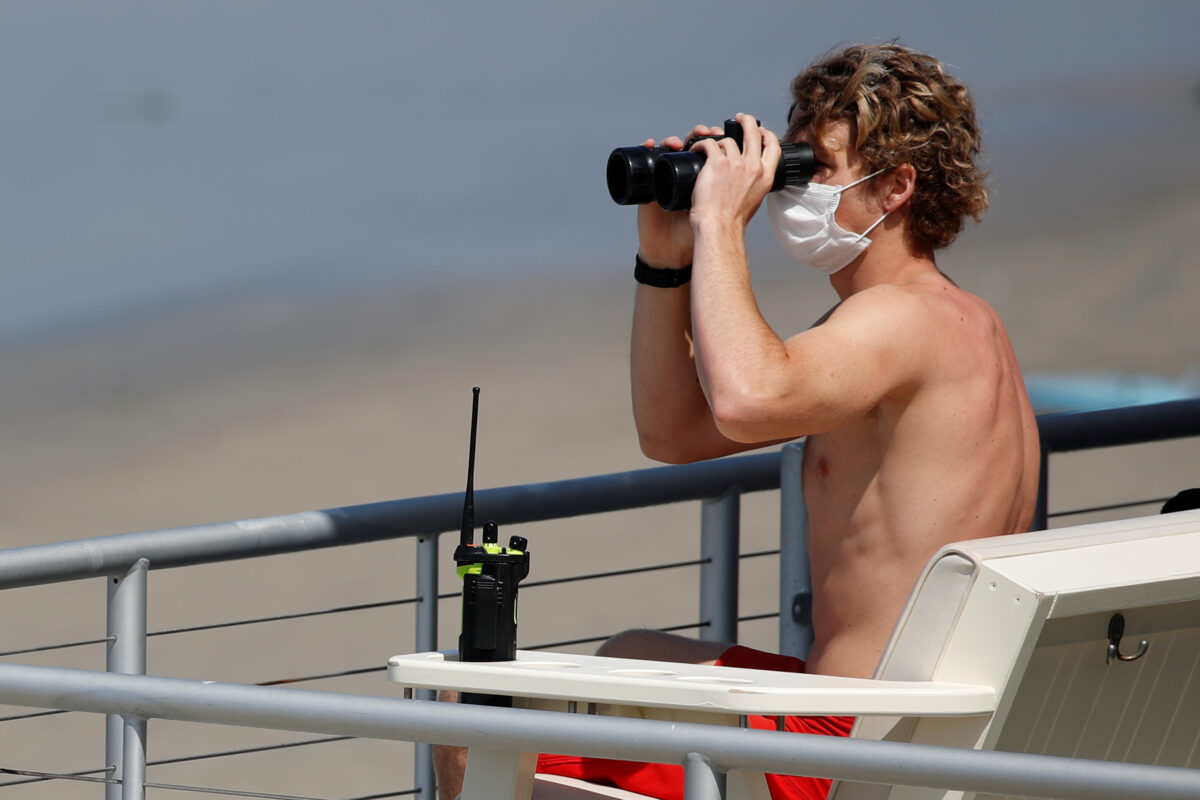
Colorado
Democratic Gov. Jared Polis’s stay at home order shifted on April 27 to a phase called Safer-at-Home featuring relaxed restrictions, including allowing real estate showings to resume and curbside retail sales to start.
Some businesses can reopen under restrictions on May 1 and some office work can resume on May 4.
“I want to reiterate, the Safer-at-Home phase is not going back to life as normal. It’s not a major adjustment from where we have been,” Polis said in a statement. “Safer-at-Home means most Coloradans should continue to limit social interactions to the greatest extent possible to just individuals in your household and wear facial masks when you are out.”
Polis, one of the few Democrats to loosen restrictions, defended his decision during an appearance on CNN on April 26.
Connecticut
Democratic Gov. Ned Lamont said April 27 that businesses could reopen as soon as May 4, depending on whether the number of COVID-19 patients in hospitals continues to declines.
“It’s not a straight line but we’re about seven days into this down slope and that means in another 7 to 10 days, we can start making some announcements about places that we can go and places that can be opened,” Lamont told reporters.
Lamont has previously targeted May 20 for reopening but the adjusted plan would see some businesses open before then.
Delaware
Democratic Gov. John Carney, who ordered residents to largely stay at home in March, outlined criteria for reopening in an April 23 release.
Reopening wouldn’t start, he said, citing federal guidelines, until the state sees two weeks of declining symptoms and presumed positive cases as well as the ability to treat COVID-19 patients in hospitals without crisis care.
The number of new cases has only dropped once in recent days, meaning the state is at least two weeks from reopening.
Florida
Gov. Ron DeSantis, a Republican, issued a stay-at-home order on April 1, one of the last in the nation to do so. The current order is set to expire on April 30.
DeSantis recently allowed local officials to reopen beaches across the state. He told reporters at the White House that phase one of an economic reopening will happen soon.
“For Florida, going from where we are now to phase one is not a very big leap. We’re going to approach it in a very measured, thoughtful, and data-driven way,” the governor said.
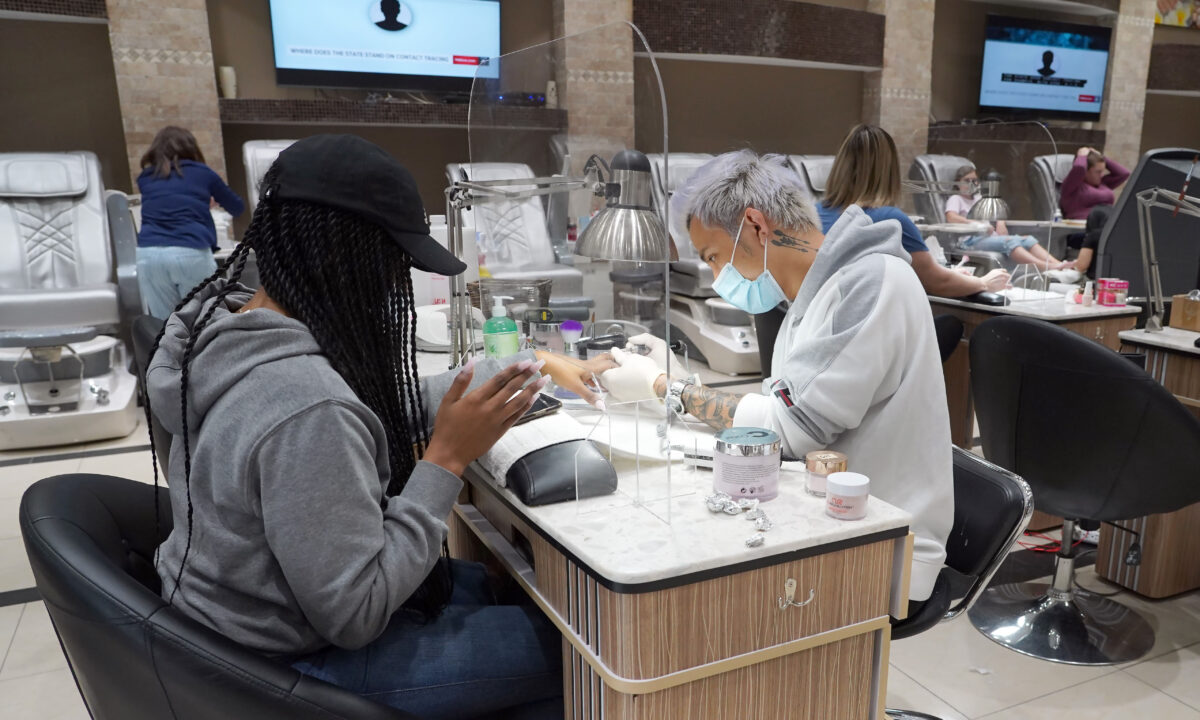
Georgia
A slew of businesses began reopening on April 24, including restaurants, movie theaters, and bowling alleys.
Republican Gov. Brian Kemp, who ordered residents to largely stay at home in March, significantly loosened his order, but it is still in place until April 30.
Some restrictions remain in place and bars, nightclubs, amusement parks, and live performance venues are still closed, while older and “medically fragile” Georgians are still required to largely stay at home.
Hawaii
Gov. David Ige, a Democrat, on April 26 extended his stay-at-home order to May 31.
The state has imposed some of the harshest measures in the nation, requiring anyone entering to quarantine for two weeks, blocking cruise ships, and closing beaches.
“This was not an easy decision. I know this has been difficult for everyone. Businesses need to reopen. People want to end this self-isolation and we want to return to normal,” Ige said in a statement. “But this virus is potentially deadly, especially for the elderly and those with preexisting conditions.”
The altered order lets Hawaiians use beaches for exercise while allowing facilities to resume elective surgeries.
Idaho
Gov. Brad Little, a Republican, announced on April 23 a four-step plan to reopen the state.
Little’s original order remains in effect through April 30 but he plans to soon let houses of worship open, along with day cares, organized youth events, and camps.
The first phase of the plan is slated to start on May 1.
“I think we will meet the criteria for stage one unless something significant happens moving forward,” Little said during a telephone town hall on Tuesday.
Illinois
Democratic Gov. J.B. Pritzker on April 23 announced an extension of his stay-at-home order, previously due to expire on May 1, through the end of May.
The altered order requires all residents above the age of 2 to wear a mask or face covering when in public places, unless people can’t “medically tolerate” such a covering.
The order also eased some restrictions, allowing state parks to reopen and letting so-called non-essential businesses take customers’ orders online or by phone and deliver them or have curbside pickup.
The extension was partially blocked by a circuit judge on April 27. Pritzker appealed the decision.
Indiana
Gov. Eric Holcomb, a Republican, extended his stay-at-home order on April 20 through May 1.
The modified mandate lets hospitals begin conducting non-emergency procedures and nurseries, garden centers, and some other businesses to open or stay open. Most restrictions stayed in effect.
“I want to thank Hoosiers in every corner of our state who have stayed socially-distanced and hunkered down. Lives are being saved, and we’re slowing the spread,” Holcomb said in a statement. “Continuing the course at this time is essential to flattening the curve while we also prepare to safely reopen Indiana for business.”
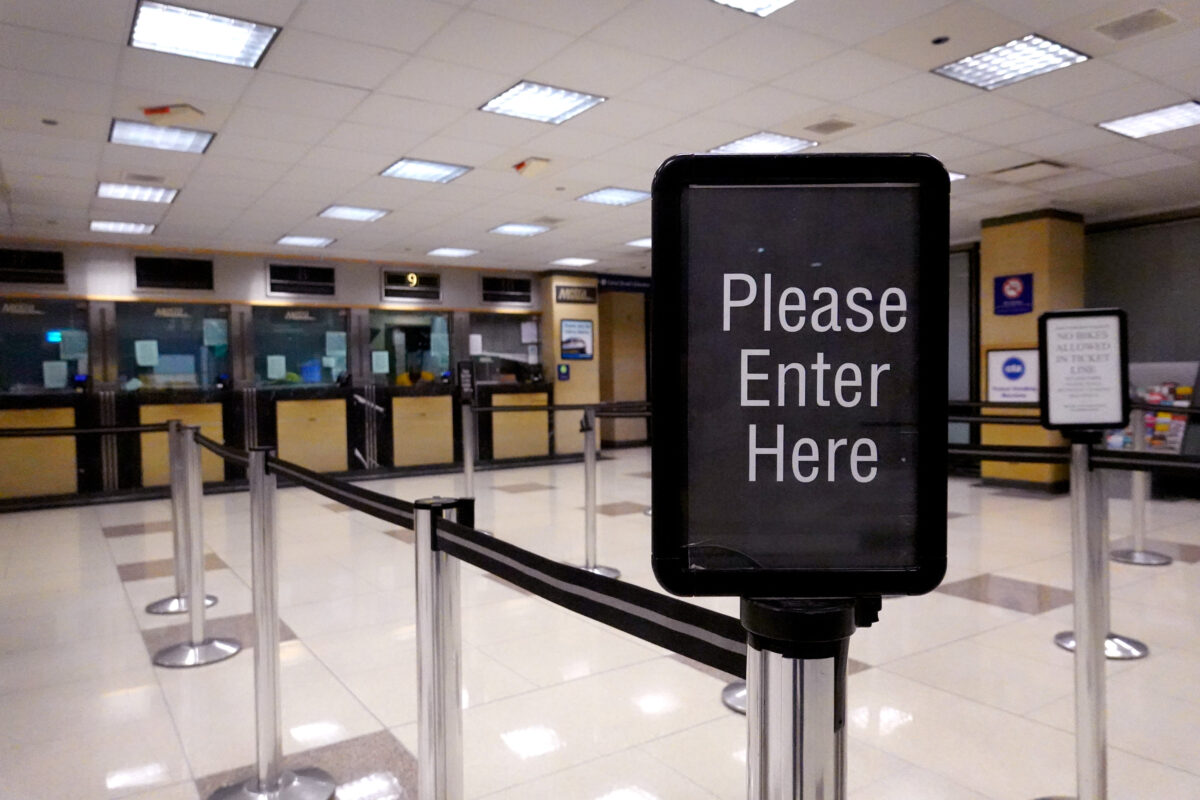
Iowa
Republican Gov. Kim Reynolds said April 27 that restaurants, fitness centers, and retailers in most counties can open at 50 percent capacity starting Friday.
Churches and other houses of worship will also be allowed to operate under limited conditions.
Reynolds previously allowed the resumption of elective surgeries and for farmers markets to start back up on April 27.
Reynolds is among the governors who refrained from issuing a stay-at-home order. She did implement a number of other measures.
Kansas
Gov. Laura Kelly, a Democrat who issued a stay-at-home mandate in March, said at a briefing on April 23 that she hopes to reopen the state on May 3, when her order is set to expire.
Kelly said in a court document that she is finalizing plans for loosening restrictions on May 4.
She plans on giving details at a press conference on Thursday.
Kentucky
Phase one of Democratic Gov. Andy Beshear’s reopening plan started on April 27.
Dentists, chiropractors, and other medical businesses were allowed to take appointments not designated as emergencies provided they don’t let people wait inside and screen them before they enter.
Phase one focuses on healthcare but other businesses will be allowed to reopen sometime in the future. The next phase of reopening will happen on May 11, the governor said, but bars, nightclubs, youth activities, and childcare won’t be allowed to reopen or restart until June.
Louisiana
The stay-at-home order from Democratic Gov. John Bel Edwards was slated to expire on May 1 but on April 27 he extended the order until May 15.
“The worst thing I can do is ignore the reality and pretend we’re in a better place than we are,” he said at a press conference.
Edwards said the first phase of reopening will likely start on May 16.
Retailers, personal care businesses, and houses of worship will be allowed to open at 25 percent capacity. Restaurants may be allowed to reopen but officials haven’t decided as of yet.
Maine
Gov. Janet Mills, a Democrat, on April 28 extended her stay-at-home order to May 31. It was previously set to expire on May 1.
The altered order contains new exceptions and Mills wants to start reopening some businesses on May 1, including barber shops, hair salons, golf courses, state parks, auto dealerships, and car washes.
Houses of worship can hold drive-in services and drive-in movie theaters are being allowed to welcome customers.
Phase two isn’t scheduled until June 1.
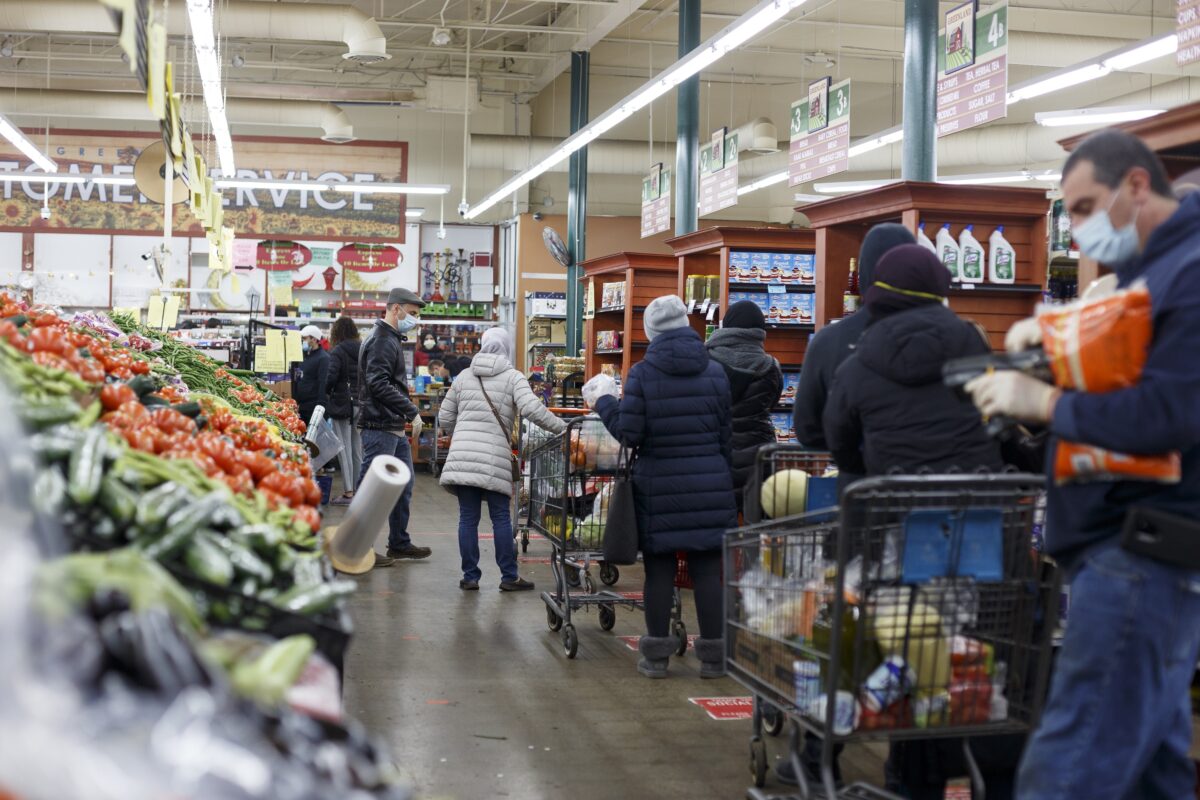
Maryland
Republican Gov. Larry Hogan on April 24 unveiled a roadmap for recovery that includes details on reopening. Businesses will be put into groupings of low, medium, and high risk, with the low-risk ones being allowed to reopen first.
But Hogan hasn’t targeted a start date for reopening and has been the most cautious GOP governor in the nation.
Hogan has said reopening will depend on the number of new cases, deaths, and hospitalizations from the CCP virus.
Massachusetts
Gov. Charlie Baker, a Republican who issued a stay-at-home mandate last month, extended his stay at home order on April 28 to May 18.
“I know pushing these dates back a couple weeks is probably not what people want to hear,” he said at a press conference. “Believe me, I’m just as frustrated as anybody else. We all look forward to stepping in front of this podium to tell you that we’re starting to reopen for business. I know we’ll get there soon, but we have to be smart in how we do it.”
Baker formed a reopening advisory board, which started meeting on Tuesday.
Michigan
Democratic Gov. Gretchen Whitmer, who imposed some of the strictest rules in the nation, including stopping the sale of seeds, announced April 24 she was extending her stay-at-home order through May 15.
The amended order requires people to wear masks or other face coverings while in grocery stores and other indoor spaces while easing some restrictions on businesses, allowing landscape companies, nurseries, and bike shops, among others, to reopen.
Whitmer told reporters on April 27 that construction workers will be able to return to work within the next week or two. Her administration is working on details for reopening for industrial sectors.
Minnesota
Democratic Gov. Tim Walz allowed some businesses to reopen on April 27.
Walz, who issued a stay-at-home mandate in March, said the move will allow 80,000 to 100,000 residents to return to work in industrial, manufacturing, and office settings that generally don’t involve direct interactions with customers or the general public. As many as 20,000 businesses were reopening, according to the governor’s office.
In Minneapolis, officials are shutting more things down, closing basketball courts, athletic fields, tennis courts, playgrounds, volleyball courts, and skate parks on May 1. Officials said the city has received more than 125 complaints of large groups at parks.
Mississippi
Republican Gov. Tate Reeves, who issued a shelter-in-place mandate on April 1, allowed retail businesses to reopen starting April 27 if they follow social distancing guidelines.
Store owners must adhere to limits on the number of shoppers.
Other businesses that weren’t allowed to reopen included movie theaters, bars, museums, gyms, and spas.
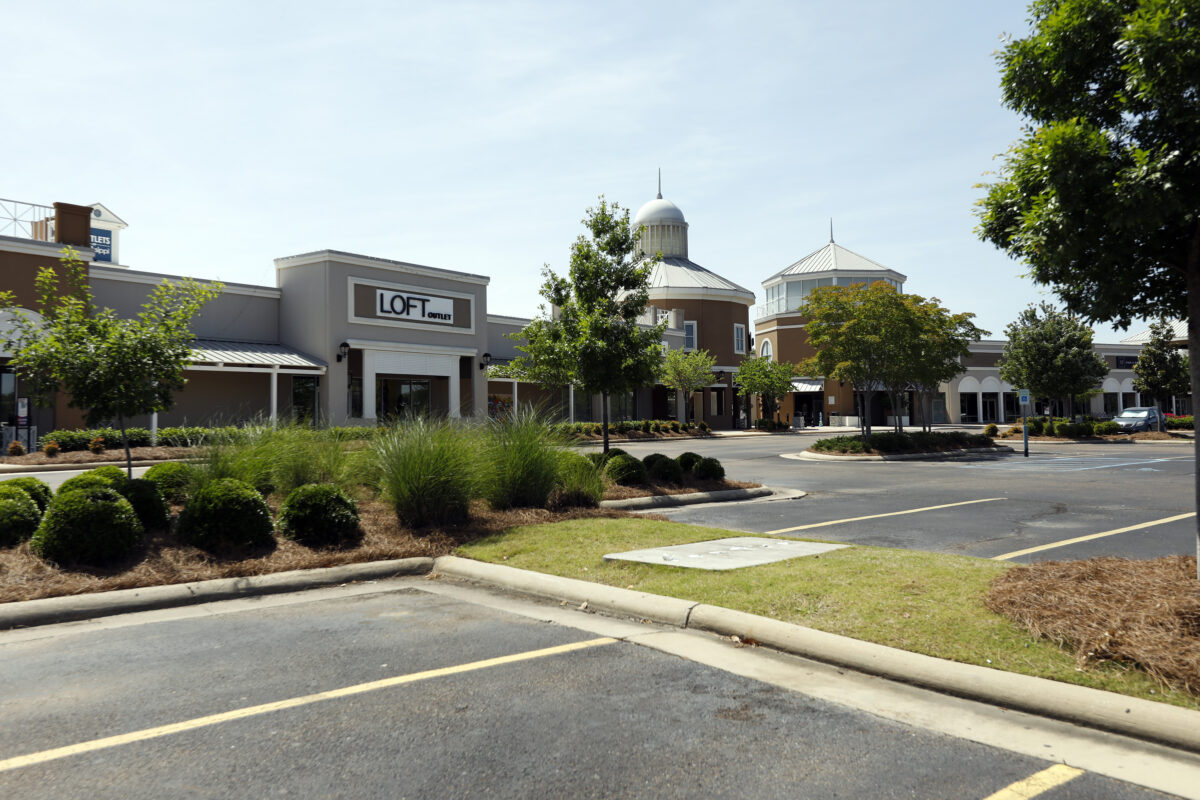
Missouri
Gov. Mike Parson, a Republican who extended his stay-at-home order through May 3, is looking at reopening businesses on May 4.
Parson announced his plan on April 27, saying all businesses can reopen next Monday provided business owners and residents follow social distancing requirements.
The main requirement is keeping 6 feet distance between an individual and people they don’t live with.
“We are successfully flattening the curve,” Parson said. “With the help of all Missourians, our plan is working. The health care system is not overwhelmed and we are winning the battle.”
Montana
Businesses started reopening on April 27 after Democratic Gov. Steve Bullock, who issued a stay-at-home order in March, announced a phased reopening plan on April 22.
Retailers can open if they adhere to social distancing requirements, while houses of worship were allowed to open on April 26 with similar measures in place.
“There are very few states in the country that can say they have seen the number of positive cases decline over these past weeks. Montana can say that because, together, we have made that decline in cases possible,” Bullock said in a statement.
Dine-in restaurants and bars will be allowed to open their doors on May 4 but will be required to operate at 50 percent capacity and have plans to keep customers at appropriate distances. Students can return to schools on May 7, pending decisions by local school boards, in what appears to be the earliest planned reopening of schools in the nation.
Nebraska
Gov. Pete Ricketts, a Republican, did not issue a stay-at-home order, though he put into place other measures.
Ricketts said April 24 that restaurants in some areas of the state can reopen dine-in service by May 4. Some other businesses can reopen, including hair salons and tattoo parlors.
Ricketts is easing some other restrictions, including allowing some health-related businesses to reopen or expand services, such as dental work and veterinary services.
Nevada
Democratic Gov. Steve Sisolak said he will be extending his stay at home order, which was slated to expire on April 30.
“Unfortunately, we’re going to have to extend the ‘Stay at Home’ order that we have for a little bit because we have not reached exactly where we want to get on the downward trajectory,” he said during an interview on ABC’s “Good Morning America.”
At the same time, Sisolak said he believes the number of new COVID-19 cases, hospitalizations, and deaths “have plateaued,” allowing for some relaxation of the restrictions.
Sisolak previously said he would relax his mandate to let gyms, some restaurants, and a selection of outpatient facilities reopen, but he declined to give a date on when that would happen.
He plans to share details on reopening at an event on Thursday.
New Hampshire
Gov. Chris Sununu, a Republican, issued a stay-at-home order in late March. He extended the state’s state of emergency on April 24 for another 21 days.
Sununu hasn’t outlined definite plans for reopening and said this week he might extend the stay-at-home order past May 4, when it’s currently set to expire.
Like many governors, Sununu has a task force analyzing how best to reopen and when to start to do so.
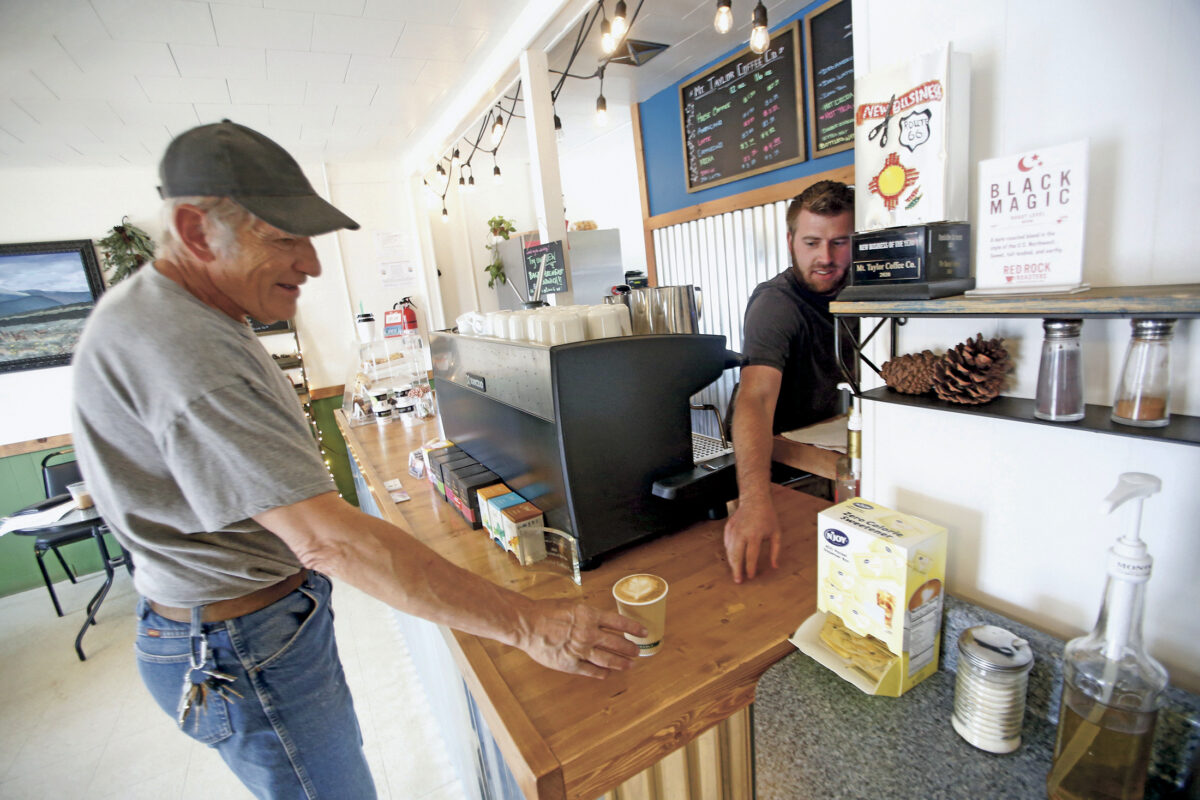
New Jersey
Democratic Gov. Phil Murphy on April 29 said he was signing an executive order to reopen New Jersey’s state parks and let golf courses and county parks reopen.
The governor recently released a six-point plan aimed at reopening but his stay-at-home order will remain in effect “until further notice,” with no modifications, until some conditions are met.
Murphy wants to see an “appreciable and sustained drop in” new COVID-19 cases and hospitalizations over two weeks as well as a boosted tested capacity, a strong contact tracing effort, places designated for isolation and quarantine, and a further build-up of medical resources, according to the plan.
One part of the plan is forming a commission to advise on how to reopen the state’s economy.
New Mexico
Democratic Gov. Michelle Lujan Grisham recently extended her stay-at-home order through “at least” May 15.
“We’re not ready to ease up,” she said in a statement. “I want to be crystal clear: While we’re making progress, we are not yet out of the woods. We will not be able to reopen everything on May 16. The virus will not be gone on May 16. The pandemic will not be over. There is no magical date.”
The governor has a task force analyzing how to reopen the economy. It met for the first time on April 24.
The mayor of Grants allowed small businesses to reopen on April 27.
New York
Gov. Andrew Cuomo, a Democrat, said April 26 that upstate could begin to reopen on May 15 when the stay-at-home orders are slated to expire.
Cuomo plans to extend restrictions for some parts of the state, primarily New York City and its environs.
If reopening isn’t done well, the state will see the number of cases, hospitalizations, and deaths begin to rise sharply again, he warned.
New York has the most cases and deaths in the nation; the bulk of the outbreak is in the city, which has a population of some 8.5 million.
North Carolina
Democrat Gov. Roy Cooper extended his shelter-in-place mandate through May 8.
There are three phases to the state’s reopening, which could start on that date, according to a plan released by the governor.
Phase one would let some businesses reopen, such as clothing stores, houseware stores, and book stores. Parks would also reopen.
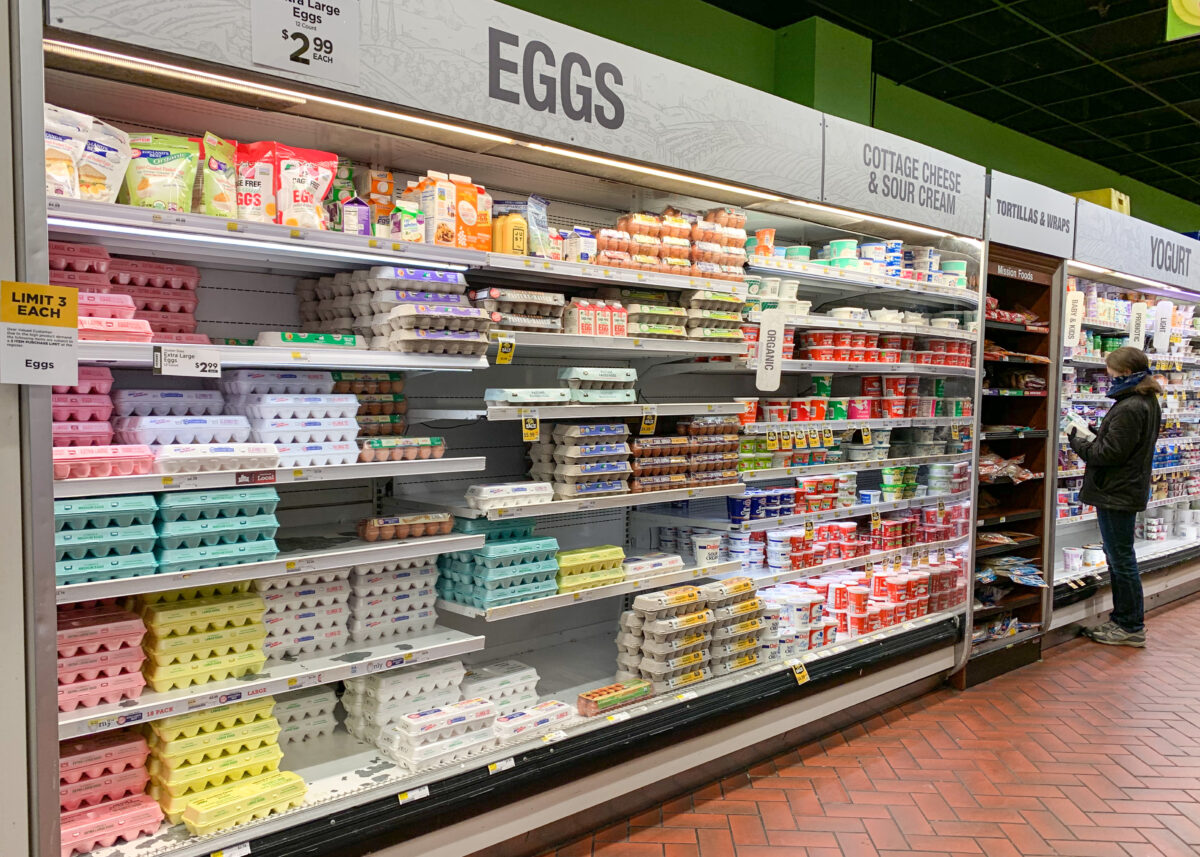
North Dakota
Gov. Doug Burgum, a Republican who didn’t issue a stay-at-home order, is planning on letting restaurants, gyms, and personal care businesses reopen on May 1.
Restaurants must limit occupancy to 50 percent of normal capacity, allow six feet of spacing between groups, and limit 10 people per table, according to guidance from the state government.
Other workplaces also face social distancing restrictions.
Guidelines for recreation centers, athletic centers, music venues, and theaters will be issued soon.
Ohio
Gov. Mike DeWine, a Republican, ordered people to stay at home in March. DeWine is letting healthcare facilities reopen or expand services on May 1. Manufacturing, construction, and distribution businesses can reopen on May 4, along with some office work.
Retailers can reopen on May 12.
Gyms, salons, day cares, and restaurants don’t have a slated reopening date. Some restaurants have remained open, but are only conducting carry-out and delivery service.
Oklahoma
Businesses will start to reopen on May 1, according to Republican Gov. Kevin Stitt.
Stitt said during a Fox News appearance over the weekend that hospitalizations peaked at 560 on March 30. The state has several hundred COVID-19 patients in hospitals now.
“So we think it’s time for a measured reopening,” he said.
Hair salons, barbershops, and several other groups of businesses can open on Friday but can only serve customers who make appointments as they adhere to social distancing restrictions.
Oregon
Gov. Kate Brown, a Democrat, issued an early shelter-in-place order in March that was later extended.
Phase one of reopening won’t start until the number of people showing symptoms of the CCP virus and the number of new COVID-19 cases drops while hospital capacity rises, state officials said.
Some remote counties are planning to reopen sooner than the rest of the state, including Douglas, Coos, and Baker counties, pending approval by Brown.
Pennsylvania
Democratic Gov. Tom Wolf said he’s targeting a reopening starting May 8, nearly two months after he issued a stay-at-home order.
Wolf is categorizing the reopening into three phases, red, yellow, and green, which will be assigned based on conditions in a county, counties, or region.
Starting May 1, golf courses, marinas, guided fishing trips, and privately owned campgrounds may reopen statewide.
“As the weather warms and daylight lengthens, enjoying time outdoors is an important way to manage stress,” Wolf said in a statement. “As we start to take measured, limited steps to reopen our commonwealth, reopening these industries will help to rebuild our economy and strengthen our mental health.”
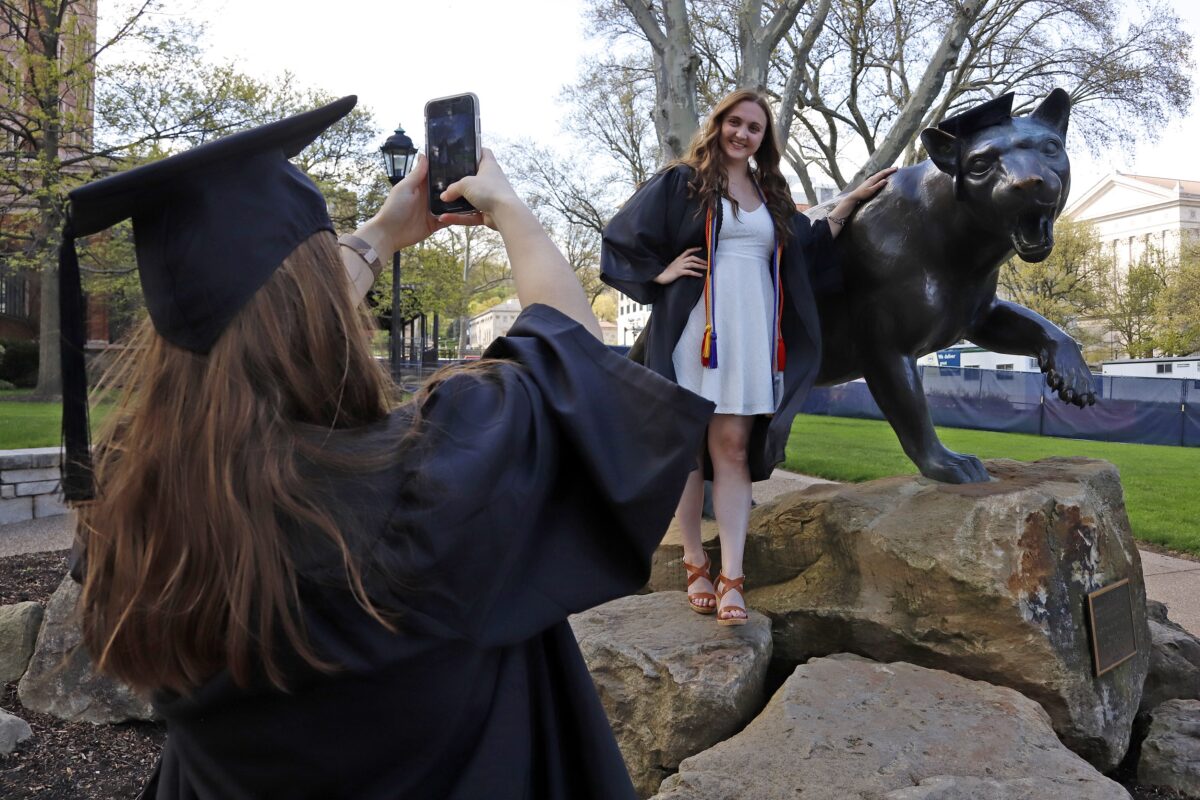
Rhode Island
Democratic Gov. Gina Raimondo is hopeful about beginning to lift her quarantine on May 9.
“It’s not going to be a flick of a switch,” Raimondo warned at a press conference on April 27. “This is an adaptive recovery. We’re going to be doing a bit of a dance during the next 12 months.”
Phase one will see a number of businesses and some social activity resume with some limitations remaining in place, such as a ban on gatherings of more than 10 people. The phase will include pilots of seated dining, including outdoor dining.
Six benchmarks must be met for businesses to reopen, Raimondo has said, including a slowing of new cases, plans for social distancing in companies and houses of worship that open their doors, and plans to shut down portions of the economy in the future if an outbreak occurs.
South Carolina
Gov. Henry McMaster, a Republican who didn’t issue a shelter-in-place order, allowed some businesses to reopen starting April 20.
The move was made in part to mitigate “the significant economic and other impacts and burdens on individuals, families, and businesses and providing appropriate flexibility and relief to facilitate the same,” according to the amended order.
South Dakota
Republican Gov. Kristi Noem, who implemented some measures but no stay-at-home mandate, unveiled a reopening plan on April 28.
Phase one, effective immediately, advises businesses that were closed that they can welcome customers back with recommendations on occupancy limits and employee screenings. Schools can host small groups of students to “check in” with them before the end of the school year.
“The plan I am unveiling today continues to put the power of decision-making into the hands of the people—where it belongs. Today’s plan relies on South Dakotan’s continuing to exercise common sense, reasonableness, innovation, and a commitment to themselves, their families, and—in turn—their communities,” Noem said in a statement.
Tennessee
Restaurants began reopening under amended social distancing guidelines on April 27, per a directive from Republican Gov. Bill Lee.
Lee has said he won’t issue an extension of his stay-at-home order, which is due to expire on April 30.
“The most important thing to me is that people can get back to work and businesses can begin to reopen,” Lee told reporters last week. “The economic difficulty that’s been created by this, it has been devastating to our state, and the sooner we can begin to change that picture, the better.”
Texas
Republican Gov. Greg Abbott, who issued a stay-at-home order in March, announced the widest reopening in the nation on April 27.
Abbott is letting restaurants, malls, movie theaters, and retailers serve customers inside their buildings starting on May 1.
Some occupancy restrictions and other limitations will remain in place as the governor lets his order expire on April 30.
“We’re not just going to open up and hope for the best. Instead, we will put measures in place that will help businesses open while also containing the virus and keeping Texas safe,” Abbott said at a press conference.

Utah
Republican Gov. Gary Herbert, who did not issue a stay-at-home mandate, is letting restaurants serve customers inside at tables starting May 1.
Gyms, salons, and some other stores will be allowed to reopen. Gatherings of up to 20 people will be allowed.
“This is a good news day for us today, as we transition from red to orange. And it only happens because of the spirit of collaboration and cooperation, which we have uniquely so in the state of Utah, the public-private partnerships, everybody working together,” Herbert said at a press conference.
Vermont
Gov. Phil Scott, a Republican, issued an addendum to his stay-at-home order on April 20, announcing some “low contact” businesses could reopen if they had no more than two staff members.
Outdoor businesses like construction work could restart with up to five workers per location and farmers markets can reopen on
May 1.
“We’re seeing some promising results and continue to trend below even the best-case scenarios predicted in recent forecasting,” Scott said in a statement. “What these trends also show is that with the right precautions, we can take small steps to get more Vermonters back to work and avoid a spike in cases that would put lives at risk.”
Virginia
Democratic Gov. Ralph Northam issued a stay-at-home order on March 30 that is in effect until June 10, the longest time period of any state.
Northam shared a roadmap of how reopening would work during a press conference on April 24.
Phase one won’t start until officials see a 14-day downward trend in confirmed COVID-19 cases and hospitalizations.
Washington
Gov. Jay Inslee, a Democrat, issued a stay-at-home order in March. He said last week that it’s not clear whether some businesses can reopen on May 4, the date the order is currently set to expire.
Inslee on April 27 said some outdoor activities can resume on May 5, including fishing, hunting, and golf.
“This is not a return to normal today,” Inslee said at a press conference. “The virus is too rampant to allow that.”
West Virginia
Gov. Jim Justice, a Republican who did not issue a stay-at-home order, on April 27 released a six-week reopening process that would see rules loosened if the state’s rate of new confirmed cases stays below 3 percent for three days.
If the goal is met, many businesses will be allowed to reopen in early May, including barbershops, nail salons, and restaurants.
Hospitals were allowed to resume elective procedures earlier in April.
Wisconsin
Democratic Gov. Tony Evers, who issued a stay-at-home order in March, unveiled a plan on April 20 for reopening the state.
“The state will be looking for a downward trajectory of influenza-like illnesses and COVID-19 symptoms reported within a 14-day period, and a downward trajectory of positive tests as a percent of total tests within a 14-day period,” according to a statement from Evers’s office.
Evers on April 27 said the state still needs to boost testing capacity, obtain more equipment like masks, and have additional contact tracing capability in place before starting to reopen.
Wyoming
Gyms, barber shops, salons, and tattoo parlors can reopen on May 1, Republican Gov. Mark Gordon said on April 28.
Day cares can welcome children back and hospitals can resume elective surgeries.
Staff at all businesses are required to wear masks.
An order limiting public gatherings to no more than nine people was extended through May 10.
 Bonnie Nirgude’
Bonnie Nirgude’
As a citizen journalist and investigative reporter, I am committed to accurately reporting the news. Wide awake, never asleep, I grew up in a 1960’s patriotic household, aware of the truth behind the false narrative.

